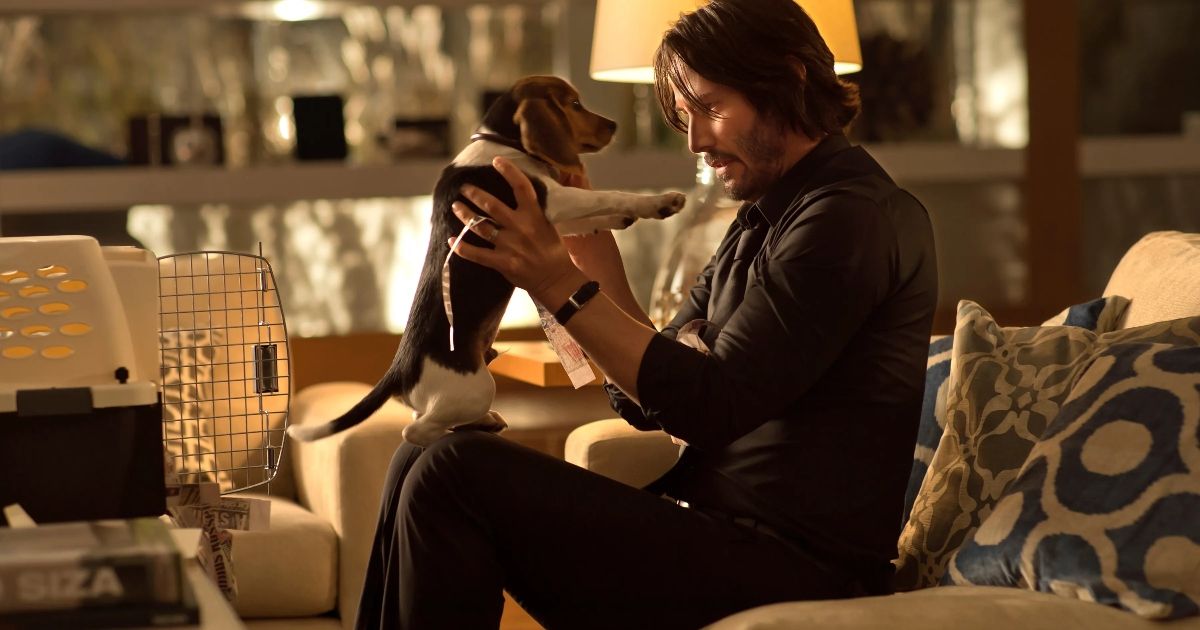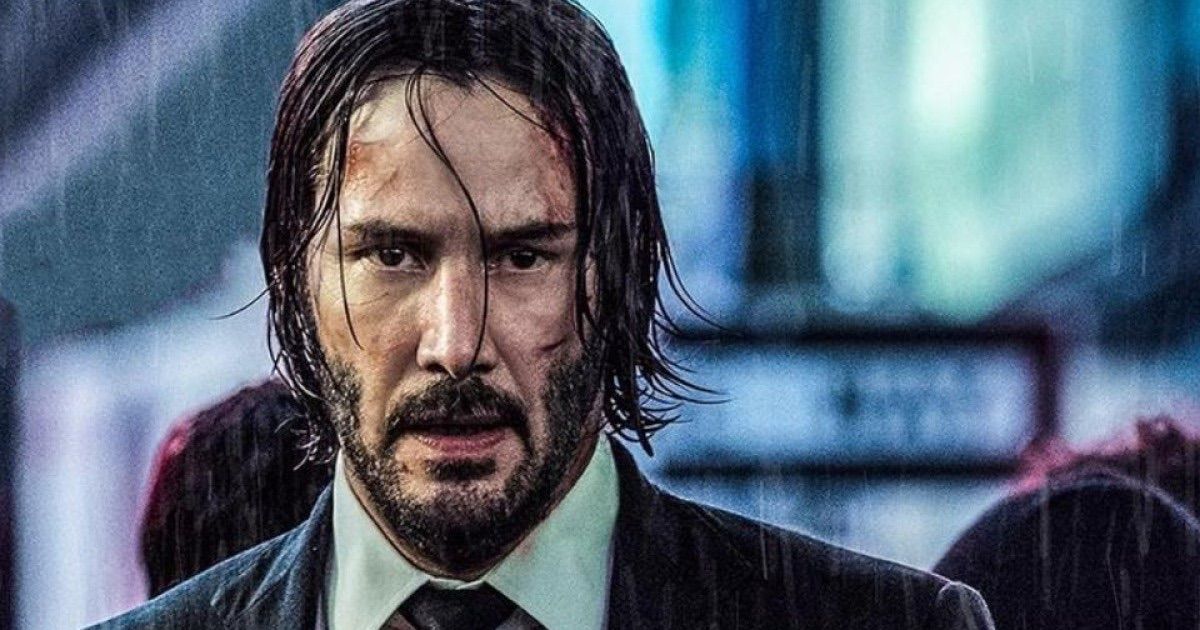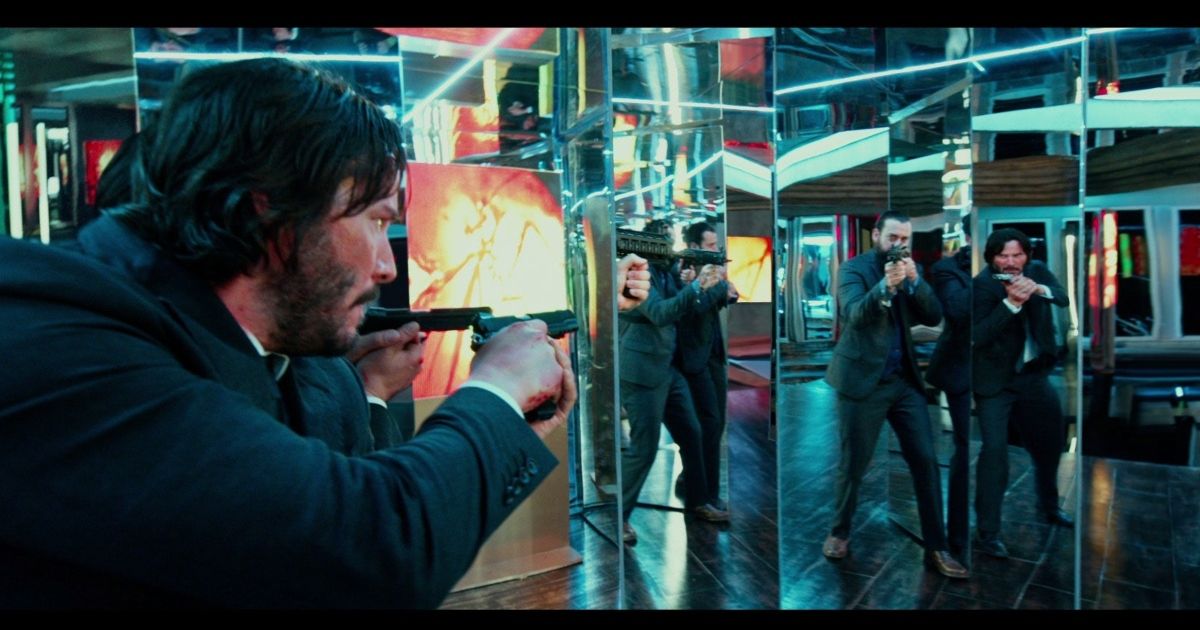John Wick director Chad Stahelski was never planning on the franchise being realistic when it came to the epic fight scenes.

Summary
- The John Wick franchise strikes a balance between hard-boiled action and sly humor, with director Chad Stahelski and actor Keanu Reeves acknowledging the absurdity of the plot and action sequences.
- The departure from realism is not new for the franchise, with the first film already establishing an extraordinary world filled with vibrant aesthetics and stylized dialogues.
- The John Wick series demonstrates that embracing a unique cinematic personality and defying predefined parameters of realism can result in a memorable and impactful film experience.
In the cinematic world, realism often finds itself at odds with storytelling. This tension is perhaps most evident in the action genre. No film series encapsulates this delicate balance better than the John Wick franchise. Recently, director Chad Stahelski responded to critics of his highly stylized action sequences.
The 2014 introduction of Keanu Reeves as a retired assassin in John Wick, on a mission of revenge over his dog’s demise, set the stage for the franchise’s impressive evolution. With three sequels to its name, the most recent being John Wick: Chapter 4, the saga has deepened its unique action signature with each installment.
Post the stellar success of the fourth chapter, Chad Stahelski had a candid conversation with Inverse. There, he didn’t shy away from admitting the conscious decision to amp up the action sequences, moving further from realism. Drawing a parallel between the audacious survival of John Wick and the antics of Bugs Bunny, Stahelski shared that the essence of the John Wick movies is to strike a balance between hardboiled action reminiscent of the ’70s and a sly, knowing humor. The line between brutality and comedy is a thin one, he suggests. Fall down ten stairs, and the audience cringes; make it 200, and they chuckle. Stahelski revealed:
The subtext of all the John Wicks is supposed to be that ’70s brutal, hardboiled kind of stuff. But I want you to laugh because I want you to know: Keanu and I are in on the joke. We know how ridiculous killing 80 guys over a puppy is. Believe me, we know.
You beat a guy up with a knife, it’s one thing, but then you throw a tomahawk from 50 feet away. It’s the accent. Having a dog attack somebody can be brutal. Having a dog attack his groin is way more brutal, but it’s way more funny, and we don’t know why. I think you need that psychosomatic response to action and violence to make it fun.
The conscious veering from realism is not a sudden diversion for the franchise. Even in the inaugural John Wick film, amidst a simpler plot, the world the character inhabited was anything but ordinary. From the concept of the assassin refuge, The Continental, to the cavalcade of enigmatic figures crisscrossing Wick’s path, the universe was established as something extraordinary. The film’s aesthetics further deviated from reality, employing vibrant colors and on-screen stylized dialogues, creating a visual spectacle reminiscent of comic books.

John Wick: Why We Need Another Film in the Franchise
The ending of John Wick: Chapter 4 seemed to signal the end of the franchise, but we believe it deserves another film. Here’s why!
More Than Fantasy: How John Wick Redefines Genre Realism

The franchise’s departure from realism is further explored in its prequel series, The Continental, currently gracing screens on Peacock. With a movie spinoff titled Ballerina in the pipeline, it’s evident that this universe’s exaggerated narrative and visual style will not be watered down any time soon.
Far from being a mere escapist fantasy, the John Wick series offers a masterclass on how to embrace a unique cinematic personality. It showcases how films can carve out their own identity by boldly reinterpreting genres, rather than trying to box them into predefined parameters of realism. The use of over-the-top action sequences, vibrant palettes, and comic-book aesthetics serve as a testament to the fact that authenticity in storytelling doesn’t always require strict adherence to reality.
While the debate on realism in cinema will continue, franchises like John Wick highlight the joys of cinematic audacity. Chad Stahelski’s vision, paired with Reeves’ unforgettable portrayal, ensures that even if John Wick’s world isn’t “real,” its impact on the audience certainly is. The series exemplifies that boundary-pushing and surreal immersion can give birth to monumental cinema.





